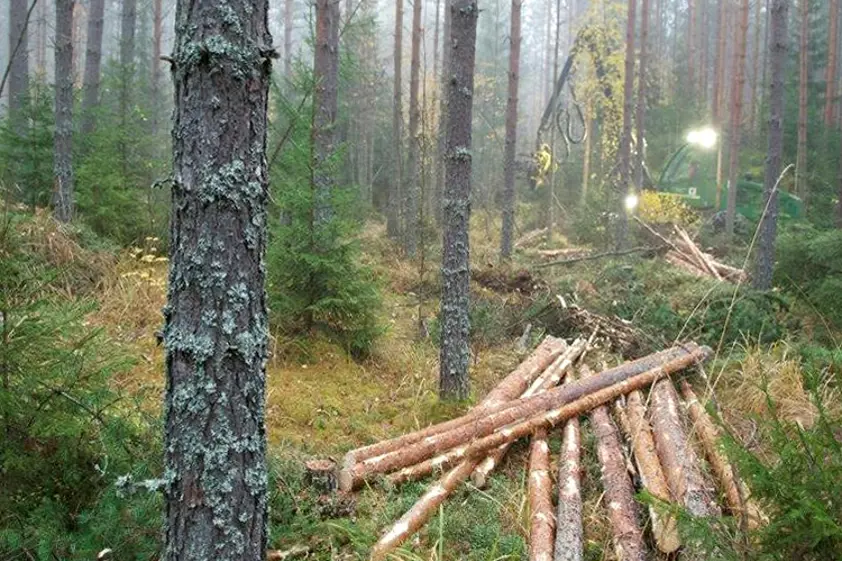National environmental legislation in Finland was reformed 20 years ago. During this reform, the Forest Act was amended with the new objective of safeguarding biodiversity. The same process also included an overhaul of the Nature Conservation Act. At the same time, forest certification was widely adopted as the standard method of promoting sustainable forestry practices. Certification also constituted the first explicit market mechanism between the environmental side of the forest industry and the consumer field. More and more environmental standards and practices for advancing social engagement were created around wood sourcing.
Practical operations develop, public discussion remains standstill
UPM launched its own action programme at the end of the 1990s. The objective was to safeguard biodiversity as part of modern, constantly evolving forestry. During these 20 years, practical operations have been developed further on the principle of constant improvement, while research facilities have been producing new information to be applied to practice.
Only one thing has remained at a standstill, public discussion about the forests. It has always been controlled by emotion and politics, instead of a dialogue where the Finnish forest and environmental knowledge could be utilised – even though we have some of the best expertise in the world in both sectors.
In this past year, discussion has revolved around the effects that the additional investments planned in the forest industry might have on wood use and the sustainability of forest utilisation, with emphasis on the biodiversity of the forests and their function as a carbon sink. Highlighting the significance of biodiversity alongside the climate debate is very important for many reasons. It is even more crucial to ensure that increasing wood use does not endanger nature in the forest or the ecosystem services it provides.
Conservation is only one method to safeguard the species
There are two different sides to safeguarding the species inhabiting our forests: forest conservation and nature management in commercial forests.
The latter can also be divided into two parts. The first part includes preserving the existing species and their habitats. For instance, we can ensure that ospreys are able to nest and their nesting trees are safeguarded during harvesting, or we can protect springs and their immediate surroundings when they host species only found in that habitat, such as fountain mosses.
The second part consists of safeguarding the diversity of species by initiating long-term processes where the effects will only be seen later. Such processes include increasing the proportion of deciduous trees to enhance tree species diversity and saving more deadwood, for instance.
Trees spared from felling start to accumulate value as deadwood, when they begin to decay after falling or for some other reason. This is the start of a decomposition process that lasts for decades, consists of various phases and features many different species. This inevitable delay has proven difficult to comprehend, both in terms of EU environmental policy and public discussion. Fortunately, research has started to produce high-quality models for demonstrating the future development of forest nature based on current forest management practices.
The harvesting volume alone does not indicate environmental impact
Forests can be utilised in a sustainable way, as long as we ensure that tree removal does not exceed growth, preserve the versatile age structure of the forests, protect valuable habitats, increase the amount of deadwood and enhance tree species diversity. Hardly any environmental impact can thus be deduced from an increase in harvesting activities at national level.
What truly matters is that valuable habitats are protected, that more and more of the features characteristic of natural forests start to appear in our forests as time goes by, and that these features ultimately form the resource combinations favoured or required by different species. All the aforementioned points are already a basic part of forestry practices today.
Of course, we must also make sure that the guidelines and rules are put into practice and operations continue to be developed further in accordance with monitoring and research efforts. Furthermore, we need to keep carrying out projects focused on certain habitats and species, such as past projects on eskers and areas affected by fires.
Replacing non-renewable resources with renewable ones means responsibility
In the face of global environmental trends and population growth, the key question becomes how to use land in a smart and responsible way. The responsible starting point is to replace non-renewable resources with renewable ones, such as wood.
In the new bioeconomy, it would be wise to review all effects and ecosystem services simultaneously, instead of focusing solely on one indicator – such as biodiversity – at a time. Comprehensive land use objectives based on ecosystem services would suit all fields of industry.
Finnish forests yield an increasing variety of wood-based products, maintain natural diversity, bind carbon, purify water, provide us with berries, mushrooms and game and bring us peace of mind. What other form of land use could offer an equally rich and versatile production capacity while also meeting the common challenges faced by mankind? And where in this wide world should the necessary wood be produced?
